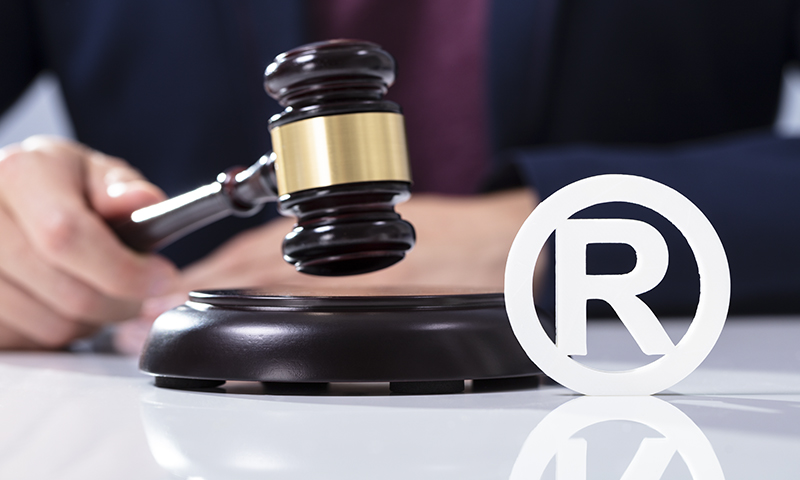Marketing: Protecting Acronyms, Logos and Names

Business, product and service names affiliated with a single word or acronym are more than ubiquitous in today’s brevity-and catch-phrase-driven consumer markets. The promotional products industry is chock-full of products that are imprinted, engraved or embroidered with a company name, logo or acronym. In an instant, the average American could likely recite a number of products or services based on a simple word, symbol or acronym: Apple, Cheerios, Nike, Bambi, IBM, NRA and so on. Promotional Product Association International’s widely-known acronym, “PPAI,” its “Mark of a Professional” logo and The PPAI Expo mark also come to mind.
But, when is a mark or acronym protected from use by others? This article explores the trademark and service mark protection statute called the Lanham Act, 15 U.S.C. § 1125.
Briefly, the Lanham Act, which was enacted by the U.S. Congress in 1946, prohibits the use of protected marks (or similar versions thereof) in a way that is likely to confuse consumers. Someone who believes that a violation of the Lanham Act (15 U.S.C. § 1125(a)) exists must show (1) that the person’s business or service name, acronym or logo is entitled to protection and (2) that an alleged infringer’s name, acronym or logo is identical to those marks or so similar that they are likely to confuse or deceive consumers.

You are likely thinking, “OMG! Are our service and product acronyms and names, and those of our clients, protected?” That can be a tricky question to answer, and the devil is in the details. Moreover, the analysis may vary, depending on the judicial circuit in which the issue is presented.
As a general rule, legal protection is only available to “distinctive” marks. Distinctive marks are marks that serve the purpose of identifying the source of the goods or services, which can occur by word usage or market reputation. “Distinction” of a mark is not always easy to determine and, in many cases, the subtleties in this area of law could result in COB (closure of business) or SOL (sorry, out of luck).
In the case of Welding Services Inc. v. Forman, 509 F.3d 1351 (11th Cir. 2007), the court described how or when a mark may be “distinct” as follows: “Some marks are inherently distinctive; some marks, though not inherently distinctive, acquire distinctiveness by becoming associated in the minds of the public with the products or services offered by the proprietor of the mark; and some marks can never become distinctive.”
To determine “distinctiveness,” courts generally consider four categories of marks: (1) fanciful or arbitrary, (2) suggestive, (3) descriptive and (4) generic.
 Arbitrary Or Fanciful Marks
Arbitrary Or Fanciful Marks
An arbitrary or fanciful mark bears no logical relationship to the product or service it is used to represent. Examples include Exxon, Kodak and Xerox, each being made-up words crafted to represent a product or service.
Suggestive Marks
A suggestive mark refers to some characteristic of the goods but requires the consumer to take an “imaginational leap” to get from the mark to the product or service. In the case of Peaceable Planet, Inc. v. Ty, Inc., 362 F.3d 986 (7th Cir. 2004), a toy camel product named “Niles” was found to be a protected suggestive mark because it required an imaginational leap from the name to the Nile River. As the “Niles court” noted in its opinion, “‘Niles’ may evoke but it certainly does not describe a camel, any more than ‘Pluto’ describes a dog, ‘Bambi’ a fawn, ‘Garfield’ a cat or ‘Charlotte’ a spider.”
Descriptive Marks
A descriptive mark identifies a characteristic or quality of the service or product. Examples of descriptive marks are “Vision Center” for eye-care services and “All Bran” for a food product. In the 1992 case of Bristol-Myers Squibb Co. v. McNeil-P.P.C., Inc., 973 F.2d 1033 (2d Cir. 1992), the court adjudicated whether the use of “PM” in the name of a nighttime headache medication was a protectable mark, and the court found that the “PM” was descriptive and not suggestive or generic.
Marks that are fanciful, arbitrary or suggestive are inherently protected; there is generally no need to show secondary meaning in the marketplace. On the other hand, descriptive marks are protected only if there is a secondary meaning to the mark or usage.
Whether a name has attained secondary meaning depends on many factors, and a non-exclusive list of factors considered by the courts includes: the length and nature of the mark’s use, the nature and extent of advertising and promotion of the mark, the efforts of the business owner to promote a conscious connection between the mark and the business, and the degree of actual recognition by the public that the name designates the business owner’s product or service.
Generic Marks
Courts generally find that generic marks can never become a protected trademark. Generic marks essentially inform the consumer precisely what class of product or services is marketed. “Light beer,” for example, has been described as generic, but the acronym “L.A.” used in low-alcohol beer labels has been described as a descriptive mark. In the 2007 opinion of Welding Services Inc. v. Forman, 509 F.3d 1351 (11th Cir. 2007), the court denied protection for a three-letter encircled acronym logo—“WSI”—because the abbreviation had not acquired a meaning distinct from the generic business name with which the acronym was associated: Welding Services, Inc. Thus, the WSI logo was also deemed generic. A generic name may also be a term by which the product or service itself is commonly known, such as “Kleenex” or “Escalator,” even if the mark was once registered and protected.
Generic-ness, if you will, focuses on the use of the term and not necessarily the term itself. As the court in Soweco, Inc. v. Shell Oil Co., 617 F.2d 1178 (5th Cir. 1980) described: “A word may be generic of some things and not of others: ‘ivory’ is generic of elephant tusks but arbitrary as applied to soap.”
Consider reviewing you or your client’s trade names, acronyms, symbols and other valuable business- or service-related identifiers. In your review, factor in your enhanced understanding of the protections for the various categories of marks and consider modifying your marketing efforts to enhance any “secondary meaning” that may be associated with descriptive marks. Consider also whether any secondary meaning remains relevant in today’s marketplace. As the court in Texas Pig Stands, Inc. v. Hard Rock Cafe International, Inc., 951 F.2d 684 (5th Cir. 1992) aptly described, “Whether ‘pig sandwich’ has acquired a secondary meaning greatly depends on whether the question is asked in 1930, shortly after the incipience of Pig Stands, or in 1990.”

Read more about some of the cases cited in this article:
Suggestive marks:
- Peaceable Planet v. Ty, Inc. https://h2o.law.harvard.edu/collages/4682
Descriptive marks
- Vision Center v. Opticks Inc. https://openjurist.org/596/f2d/111/vision-center-v-opticks-inc-g-d
- Bristol-Myers Squibb Co. v. McNeil PPC., Inc. https://openjurist.org/973/f2d/1033/bristol-myers-squibb-company-v-mcneil-ppc-inc
Secondary meaning:
- Tartell v. South Florida Sinus and Allery Center https://law.justia.com/cases/federal/appellate-courts/ca11/14-13178/14-13178-2015-06-23.html
Anita M. Flynn v. A.K. Peters, Ltd. https://caselaw.findlaw.com/us-1st-circuit/1033991.html
Generic marks:
- Heileman Brewing Company, Inc. and Miller Brewing Co. v Anheuser-Busch, Inc. https://www.courtlistener.com/opinion/522232/g-heileman-brewing-company-inc-and-miller-brewing-company/
- Welding Services V. Terry Forman https://law.justia.com/cases/federal/appellate-courts/ca11/08-13287/200813287-2011-02-28.html
- Texas Pig Stands, Inc. v. Hard Rock Café Intl. https://law.resource.org/pub/us/case/reporter/F2/951/951.F2d.684.90-5567.91-5510.html
–––––––––––––––––––––––––––––––––––––––––––––––––––––––––––
Cory Halliburton is an attorney with Weycer, Kaplan, Pulaski & Zuber, P.C. (WKPZ), with officers in Dallas, Houston and Arlington, Texas, and he serves as general counsel for PPAI. This article is for general informational purposes only; it is not legal advice and should not be relied upon as such. There may be other federal or state laws that provide a means to protect trade or service marks. Each recipient is encouraged to consult independent legal counsel before making any decisions concerning the matters in this communication.

